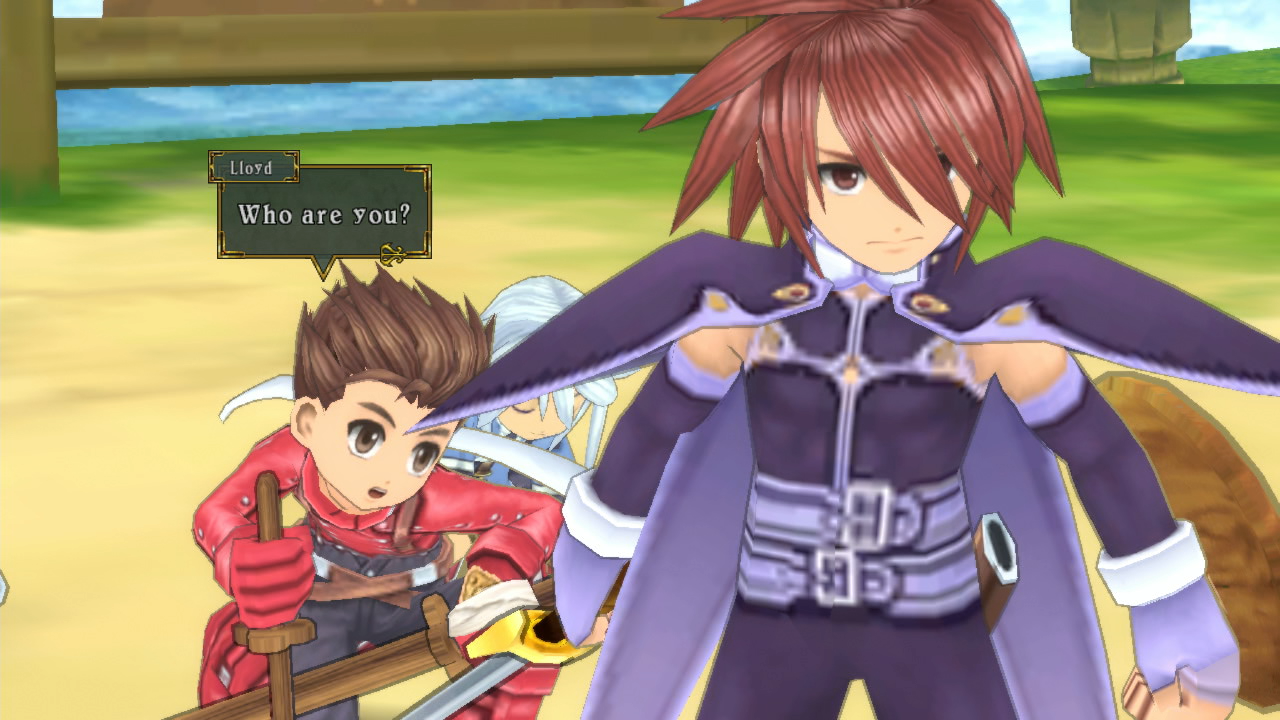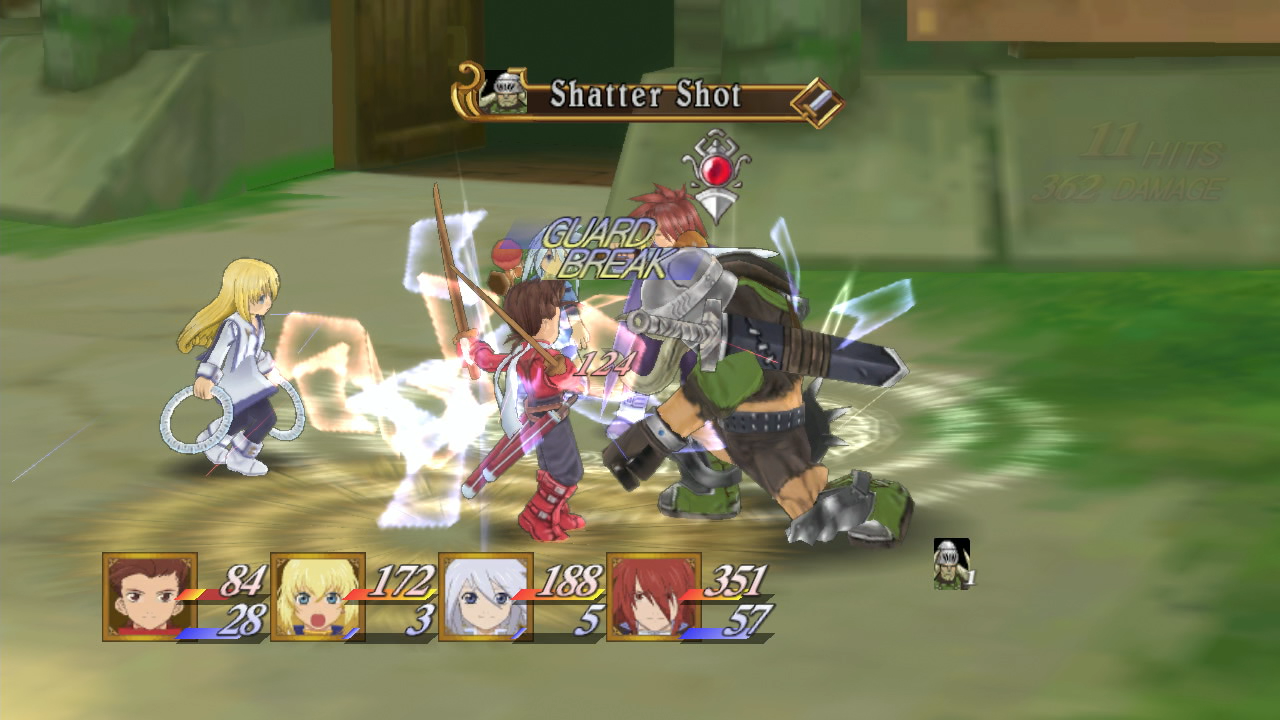Review by Clark A.
Tales of Symphonia originally released at a point during which JRPGs were classically turn-based and text-heavy affairs. Aside from the fact that it had considerable marketing behind it, many claim Symphonia was a success because it stood out. It had voice acting, multiplayer co-op, a three dimensional world, no random encounters, a real-time battle system and other such splendours that were only highlighted by being released on the RPG-famished GameCube.
Symphonia is primarily about the characters. Protagonist Lloyd Irving is in many ways your standard foolish hero with a heart of gold. More vitally, he’s an affable character from the outset and his flaws only make him all the more engaging. His shortcomings come off as justifiable for his age or morally founded regardless of naivety. When he’s particularly out of line or the situation demands it, he’s not above trying to perceive the world from more than a black and white view. His personal growth is discernible without coming at the expense of his initial charm.
Those who aren’t traditionally fans of JRPGs may find themselves drawn in by the real-time battles that offer up more than mere hacking and slashing. There are plenty of strategies that need to be employed to bring out the true strength of your four person team and there’s more than sufficient room to discover combos and capitalise on enemy weaknesses. It’s a relatively easy experience for genre veterans, but there’s plenty of hidden depth to be discovered and aforementioned intricacies like local multiplayer give Symphonia’s hundreds of bouts exceptional longevity.
The developers of Tales of Symphonia’s sequel, Dawn of the New World, were not content with sticking to its predecessor’s formula and this is instantly observable. The likable cast of the previous game returns but is heavily marred by comparatively flat performances and is sidelined in favour of two new protagonists. The main one, Emil Castagnier, is a very controversial fellow indeed.
While Symphonia didn’t have the freedom some believe it did, it certainly had more exploration to offer than Dawn of the New World, which emphasises automatic movement via plot and strips out the exploration-heavy world map entirely. If Tales games aren’t about the story, this one seems to have missed the memo and highlights the aspect people are least likely to be enamoured with.
As a complete high-definition package, Tales of Symphonia Chronicles doesn’t make a great deal of strides. Its lack (or at least toning down) of the original’s trademark cell-shading will rub many aficionados the wrong way. Features like the addition of a Japanese voice track (and, by extension, audio for the optional skits since there is none for the English dub) are worthwhile enhancements but the value of such things is highly subjective, particularly when this is one of the rare instances where the English dub is wonderful.
Technical Editor














